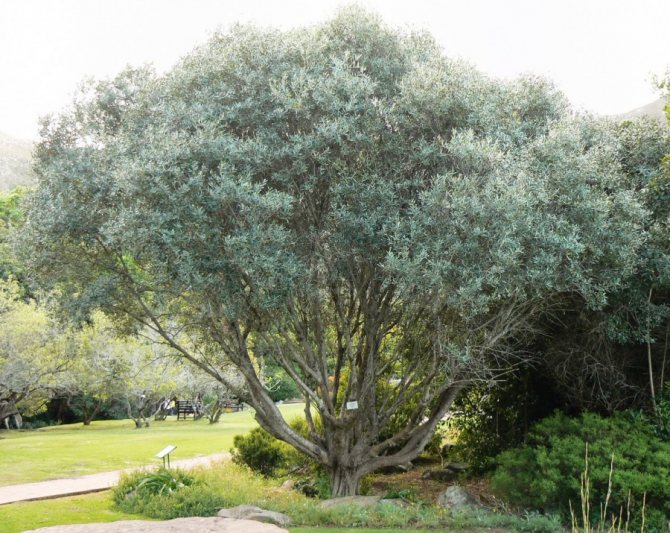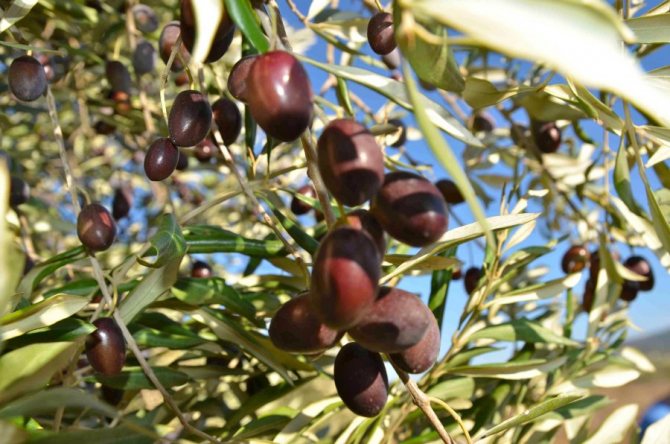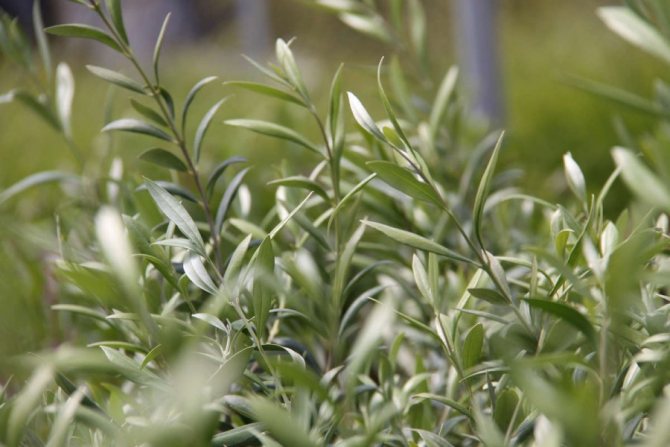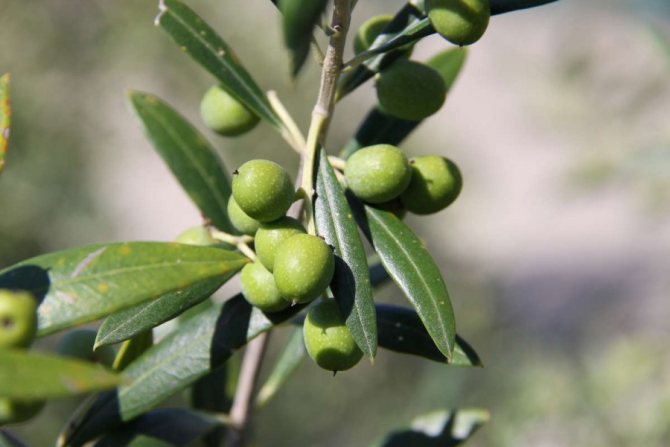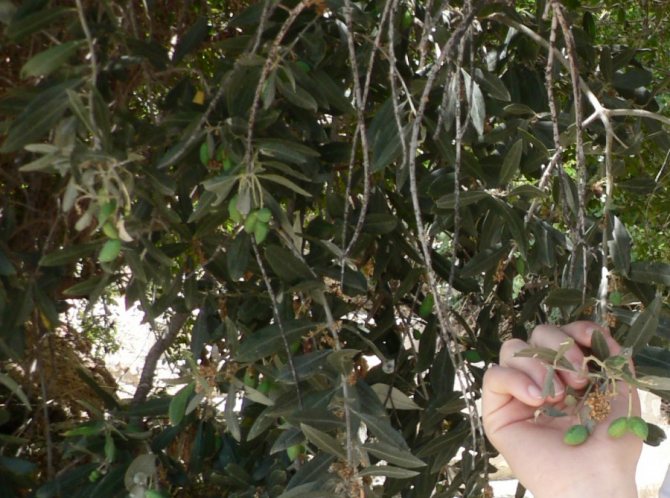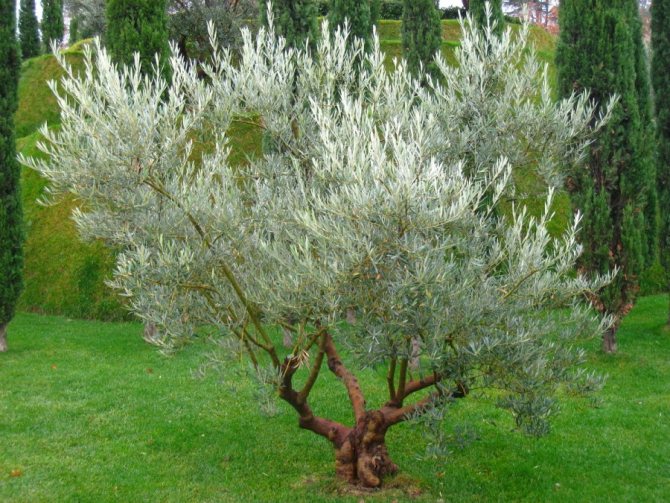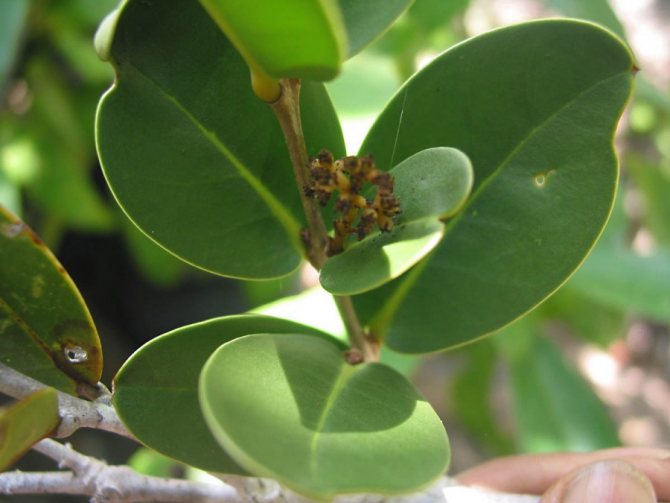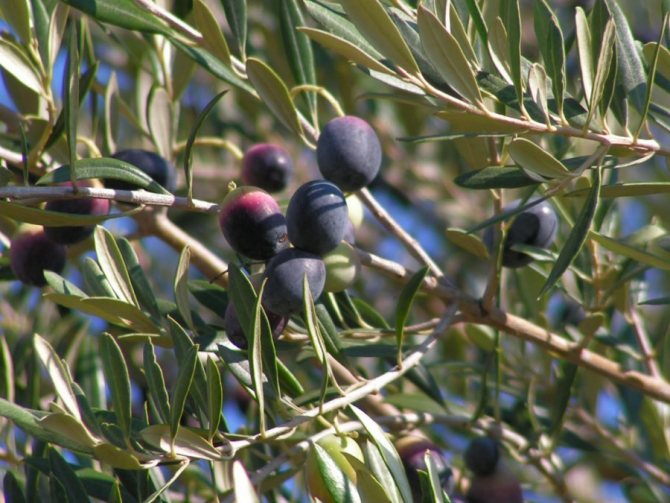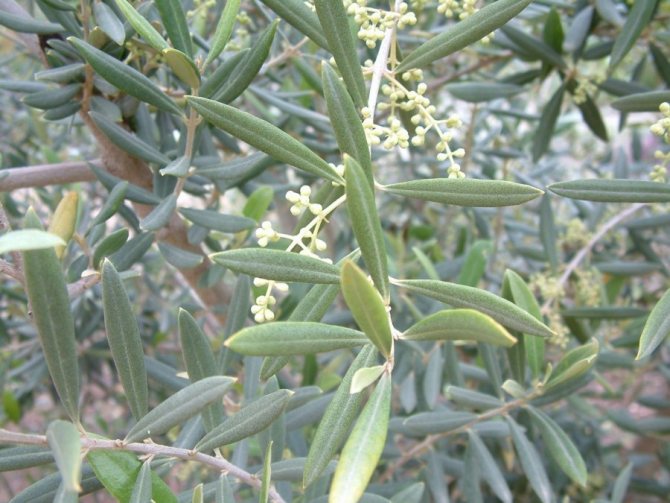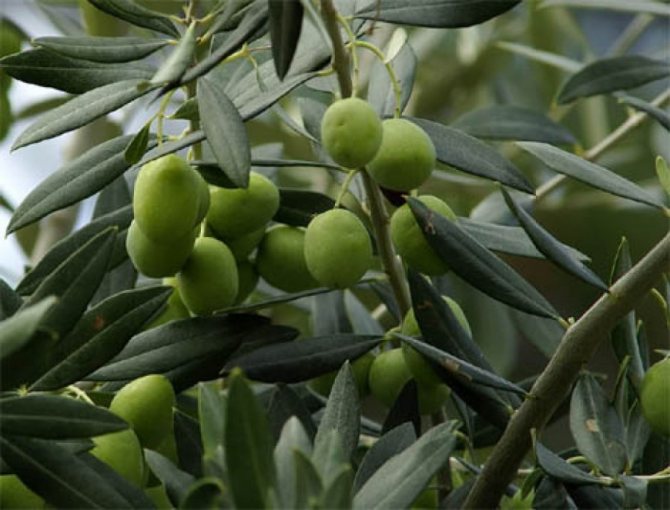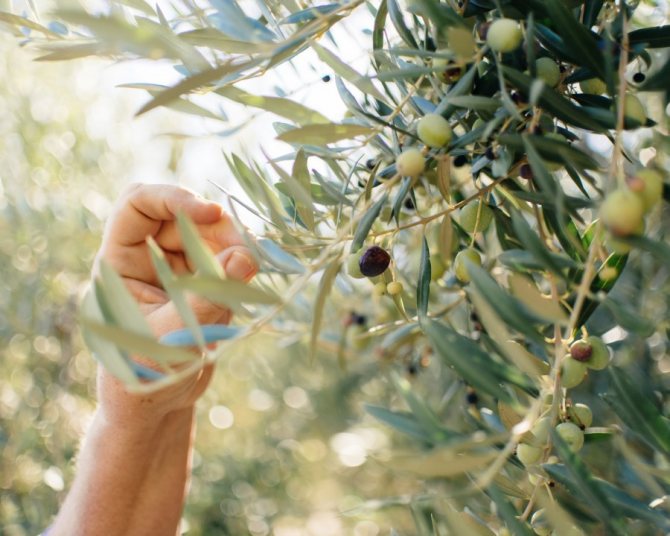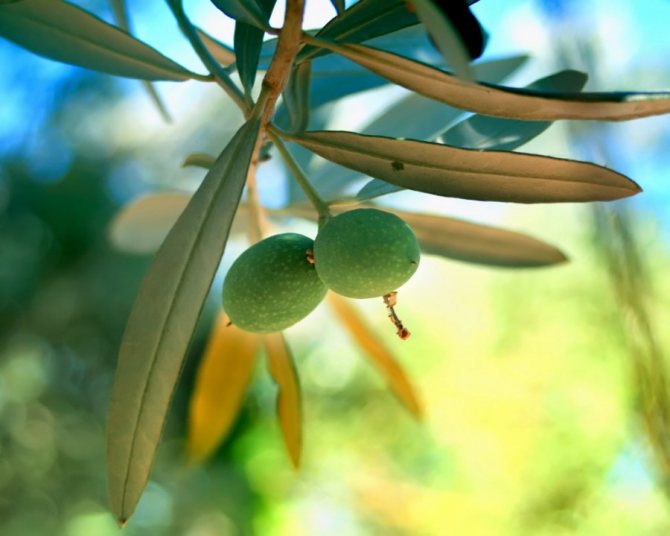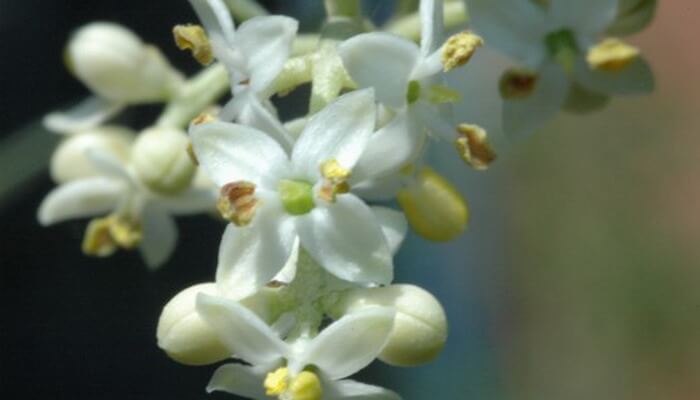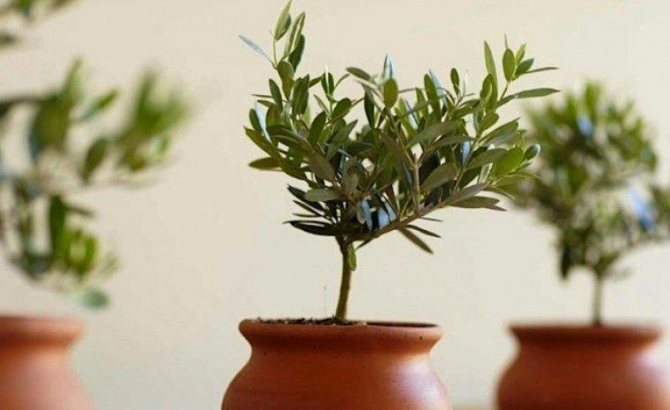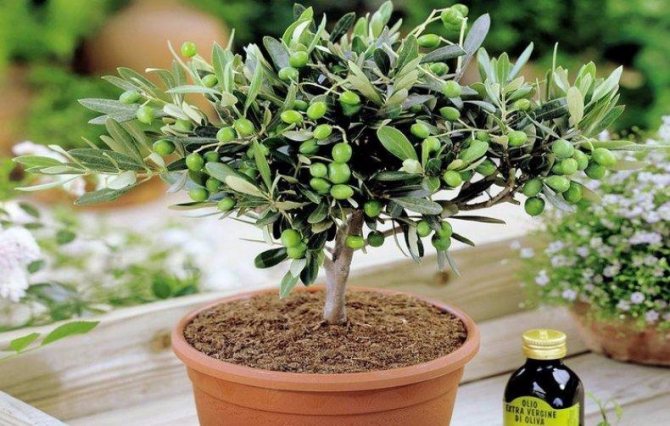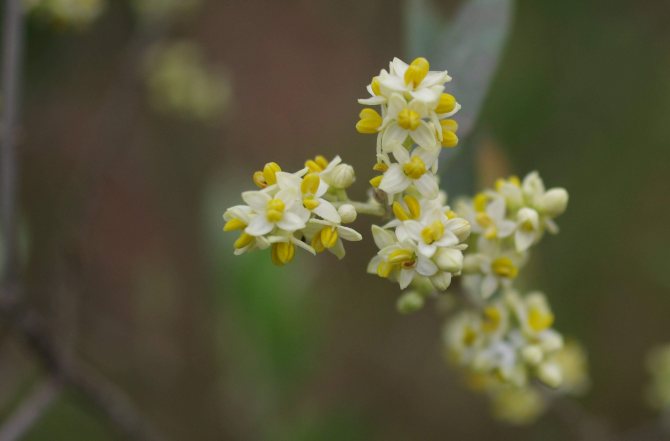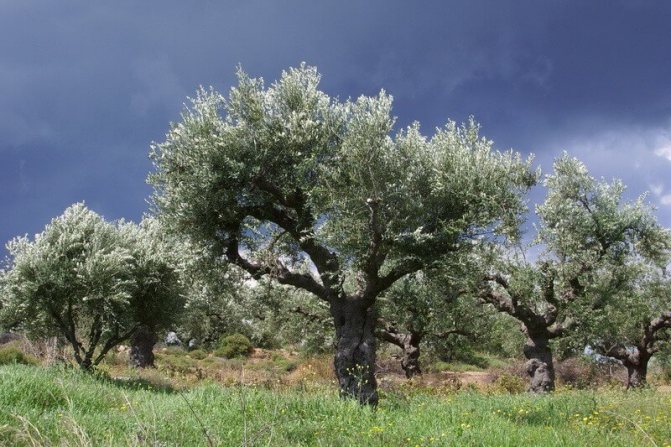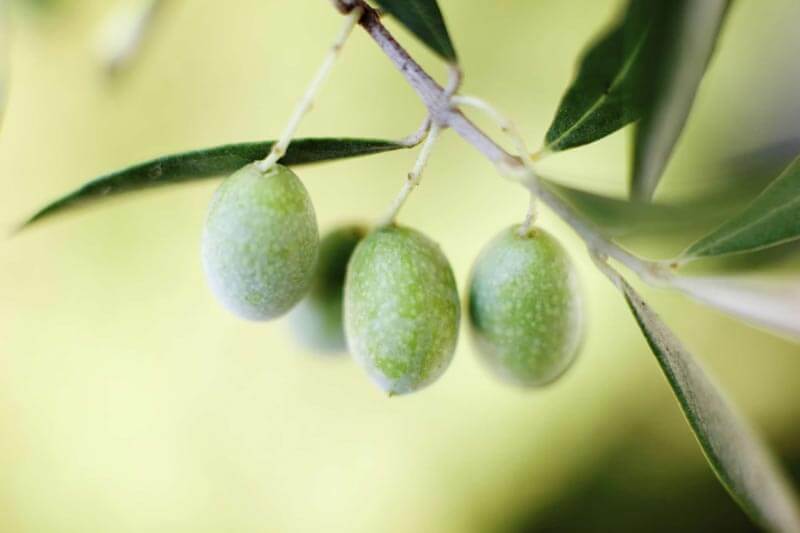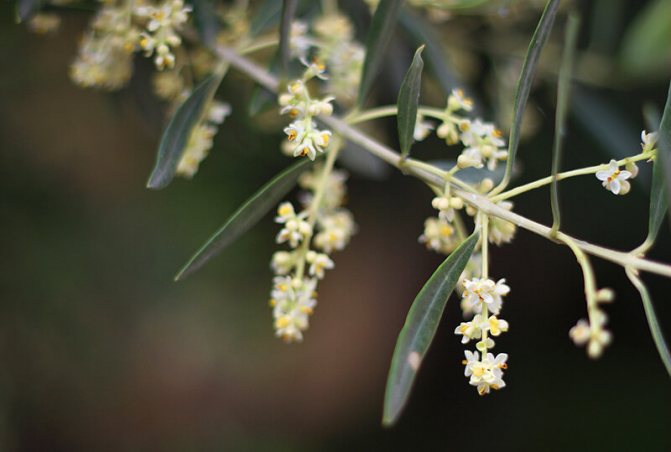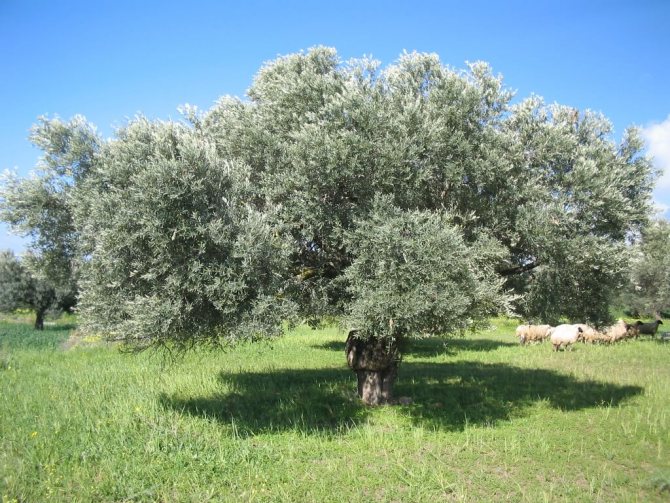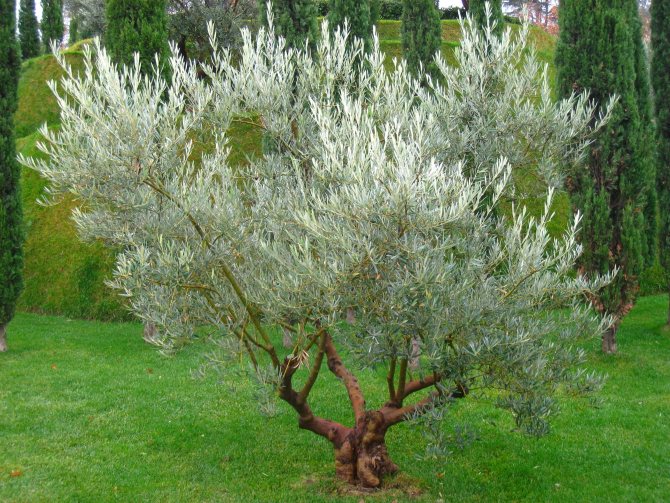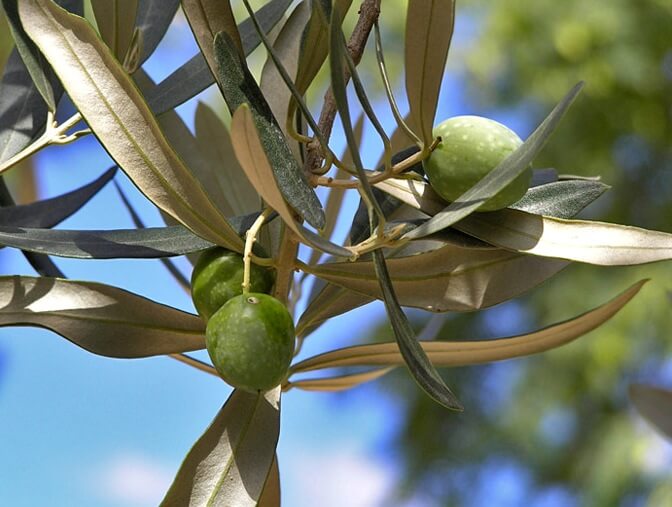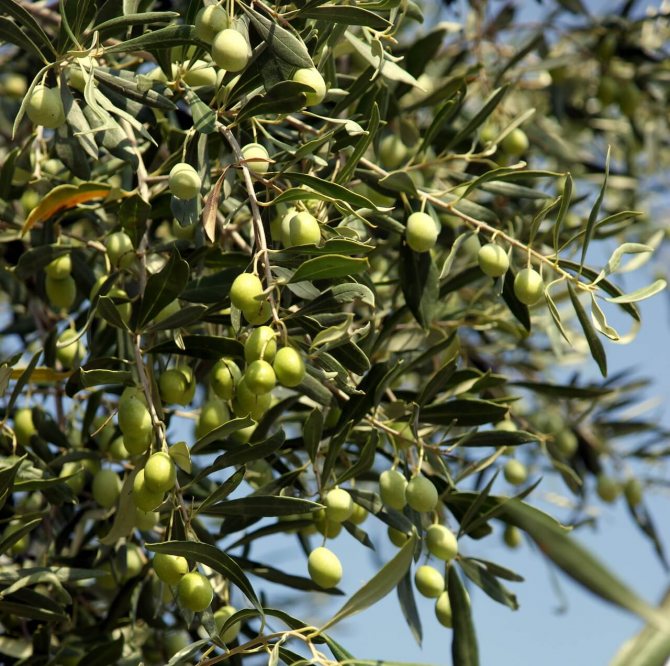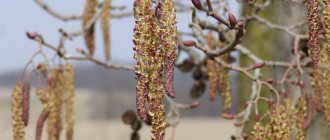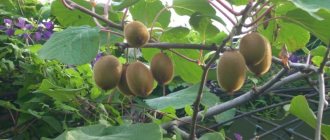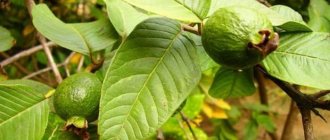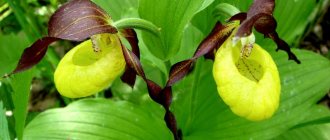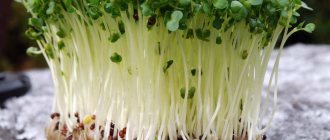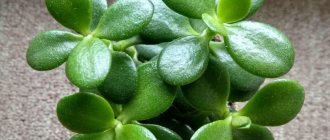The olive tree plays an important role in various national cultures, is a universally recognized symbol of peace, longevity and prosperity. People have known it since ancient times. In Greece and other states of the Mediterranean, it has been cultivated for many millennia. In honor of the olive, or olives, a botanical family was named, which also includes jasmine and ash. The European olive is the most popular of 35 types.

Olive is a relict tree, which began to be cultivated in the Stone Age for the sake of obtaining fruits... The favorable warm and humid climate of the "cradle of civilization", as the Mediterranean is called, contributed to its spread. Cultivated varieties were bred in ancient times, there are practically no wild varieties left. Olive is grown in Greece, Spain, southern Italy, Turkey, Iran, North Africa, on the Black Sea coast of Russia. She was introduced to South America and Mexico.
The olive tree is a houseplant. Home care
Most often, olive trees are grown in apartments not for fruit, but for the beautiful appearance of this plant. Its long leaves are gray-green in color and contain flavonoids and treterpenes. When buying such a tree, be sure to ask the seller about the plant variety.
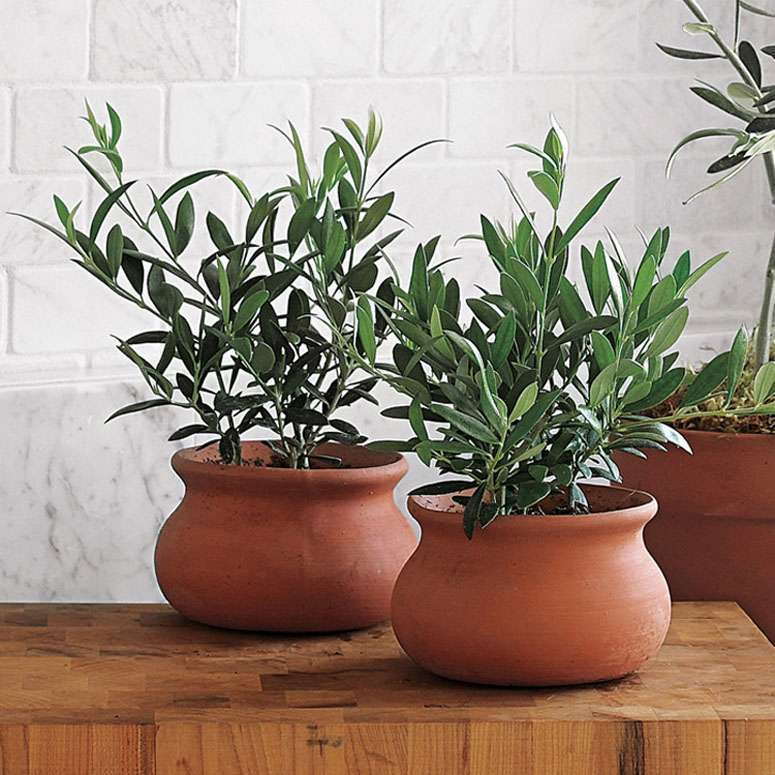

Olive trees are classified into three varieties:
- who eat;
- which are intended for the production of oil;
- universal varieties.
There are a few rules to keep in mind when growing an olive tree at home. At home, it is better to start a tree no more than 2 m high. Since olives are dioecious, this means that both female and male cells are required to produce fruits. You will have to pollinate yourself, it is better to use a soft brush for this.
Reasons for the lack of flowers
- A wild plant grown from seed.
- Lack of a dormant period.
- Insufficient lighting.
In winter, the olive tree may lack light. That is why it is supplemented using fluorescent lamps. Be sure to stop watering in winter and do not fertilize the plant. The fruit can be obtained by grafting an olive tree. To do this, a notch is made on the trunk, where a piece of a varietal tree that bears fruit is inserted. Usually you need to plant the olive in the spring. This is done according to the instructions in the same way as a regular fruit tree. If you grow an indoor tree, then you do not need to graft it, since the culture rarely bears fruit at home. Inoculation is carried out in a cleft or sprouting eye.
An adult tree, unlike a young plant, is unpretentious. It perfectly tolerates the absence of moisture and waterlogging. The olive tree that you planted in the garden does not need to be repotted. Just cut dry branches in time and shape the crown as you see fit. From April to September, do not forget to water the olive tree with nitrogen fertilizers. This will accelerate growth and prevent disease.
The olive tree belongs to the Olive family. In the Mediterranean, in the south of Crimea, in the southern regions of Russia and in other areas with a mild climate, this plant is grown in the open field. In more severe conditions, you can grow it in a winter garden or in a spacious, bright room, including an apartment. Table trees will bear fruit regularly with proper care.
The olive tree belongs to the centenarians. It has been growing for over 500 years.Olive trees grow in the Garden of Gethsemane (Jerusalem), the age of which, according to scientists, reaches 2000 years. Greece is considered the birthplace of the olive. According to an ancient legend, the goddess Athena sent an olive branch to this fertile land, from which the first tree grew.
Olives are a real treasure for the human body. They contain over 100 nutrients. It seems that nature itself took care of the health, freshness and beauty of a person, giving him these priceless fruits.
Olives are the simplest and most effective prevention of diseases of the heart, blood vessels, gastrointestinal tract and breast cancer. To achieve the desired effect, it is enough to eat only eight olives a day or season salads with olive oil.
Oliva is the personification of deep internal cultural ties. At least that's what Thomas Friedman thinks. He expressed his thoughts on globalization and cultural identity in his sensational book Lexus and the Olive Tree, published in 1999.
Olive tree from seed
It is believed that the propagation or cultivation of olive tree seeds is the most laborious, but thanks to it, you can see the whole process of growth of this plant. In order to increase the germination of seeds, they must be germinated. First, the seeds are soaked in an alkali solution (caustic soda) for 15-17 hours. After that, they are rinsed with clean water and planted in a small pot (no more than 5-7 cm in diameter). It is not worth deepening much, it is enough to plant it in the ground to a depth of 1-2 cm.The soil will suit light and loose. Usually such soil consists of sand, turf, peat. Watering should be done as the soil dries up, try to neither dry nor fill the soil. The first shoots should appear in 8-10 weeks. It is necessary to take into account the fact that no more than 40% of sprouts grow from seeds, and the fruits will appear no earlier than 10 years later.


Olive tree: propagation by cuttings
When propagated by cuttings, a new tree will be able to please you with fruits in 2-3 years. Treat cut 2-3-year-old branches with a growth stimulating agent and plant in the sand to a depth of 10-12 centimeters and cover with a cap from a glass or plastic jar. With good lighting and maintaining the temperature at 240-260 C, rooting will occur in a month. Watering the cuttings is categorically not recommended; it is advisable to use only spraying with settled, warm water. And after that, new, young shoots will begin to appear. It will take three to four months to fully form the root system. And after this period it will be possible to plant a young tree in a large pot. It is better to start reproduction in this way in the autumn. Then, by spring, a new, rooted olive tree will decorate your windowsill.
This video provides educational material on how to grow an olive tree at home.
Olive tree transplant
Every year from late February to mid-April, it is worth replanting olive trees under four or five years of age. Further, it is enough to do this once every two to three years in the spring. In order not to damage the root, the transplant is carried out by the transshipment method, that is, the earth is not chipped from the roots, but transplanted into a larger pot and new soil is added.
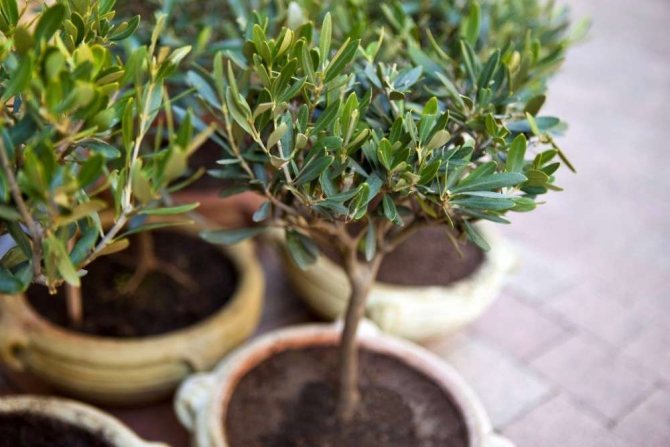

Olive Tree. Home care: leaves are falling, why?
- The first and foremost reason why the olive tree sheds its leaves is the watering regime. Since the plant easily tolerates drought, it should not be flooded with water. It is necessary to ensure that the soil is completely dry between waterings. But this is only in the summer. In winter, on the contrary, watering is almost completely removed.
- The second reason may be a change in the location of the plant. It should be on the south or southwest window. This tree loves a lot of light.
Subject to the temperature regime, illumination, rest in the winter, this tree will bring not only aesthetic pleasure, but also fruits.
This video describes in detail how to grow an olive tree at home. Do not forget to leave questions and comments on the article.
In the natural environment, the olive grows exclusively in warm countries. However, not everyone knows that the culture can also be grown in a pot. Taking proper care of your olive tree at home will help you get a wonderful ornamental plant. It will be possible to grow a culture from a cuttings or seeds. Moreover, the fruits will appear only 10 years after planting and will not be too tasty.
Botanical description
At a young age, olives are undersized, thin-stemmed trees or shrubs, not exceeding 4–5 m. The bark is dark gray, furrowed, rather thick. The shoots are elongated, the crown is narrow and sparse.
Olive leaves are simple, leathery, narrow-lanceolate, elongated, with pointed ends and solid edges... On the shoots, they are located opposite. The upper part is bluish-green, with thin veins, the back is silvery. For the winter, the leaves do not fall, the renewal occurs gradually, they live for about 3 years.


Flowers are axillary, unisexual, light yellow or cream, about 4-6 mm, collected in elongated paniculate brushes of 10-40 pieces. They bloom in early April, flowering duration is 2-3 months, depending on the region of growth. At this time, the trees give off a very delicate aroma. After pollination, which occurs crosswise or with the help of the wind, the fruits are tied, which are rounded drupes, shaped like small plums.... Their size is from 1 to 4 cm. The surface at various stages of maturity has a color from light green to brown, purple or almost black. Sometimes the thin skin is covered with a waxy coating. The fruits are called olives, or olives. They contain a large, stiff, furrowed bone surrounded by pulp. Under favorable conditions, trees bear fruit twice a year from the age of 15–20.
As the plants grow older, they spread out in breadth: the trunks increase in diameter, the shoots thicken, the crown acquires a spherical shape. They can reach a height of 12 m. The root system of mature trees also grows, becomes branched and powerful. The ends of the roots are sensitive to mineral compounds, which is typical for most sclerophytic plants. This allows trees to grow on steep slopes, in mountainous areas, poor rocky soils. Strong roots strengthen crumbling soil, which is why olives are often planted where there is a risk of landslides.


Which varieties are suitable for indoor growing
Growing olives in pots is used for decorating rooms. To do this, it is worth choosing European varieties that differ in miniature size.
Crimean
This is a wonderful variety that grows in the natural environment in the Crimea. It has excellent decorative properties.
Nikitskaya
Under natural conditions, the tree grows on the southern coast of Crimea. This plant is perfect for growing at home.
Urtinskaya
Another good variety that tastes great. At home, it is grown for the purpose of decorating the premises.
Askelano
This is a Spanish variety that many gardeners love. It has dark green leaves and delicious fruits.
Mession
This tree has medium-sized fruits. They are distinguished by their oval shape and versatility.
Sevigliano
This is a Spanish large-fruited variety. When grown under natural conditions, the weight of the fruit reaches 10-12 grams.
Coregialo
This variety is characterized by rather small fruits. They are distinguished by an elongated oval shape and an almost black shade.
Najwi
It is a Georgian olive tree variety. A characteristic feature of this plant is a high demand for moisture.
Content
- 1 Areal
- 2 Botanical description 2.1 Leaves
- 2.2 Flowers
- 2.3 Fruit
- 2.4 Collection and procurement
- 3.1 Varieties
- 4.1 Synonyms
- 5.1 Russia
What do you need?
There are many things to consider when growing an olive tree on your own. For this, it is important to correctly select the composition of the soil, place, temperature regime, capacity.
Capacity and required soil
Initially, choose a large pot for the olive. Its size should be at least 60 centimeters in depth and width. The container must have drainage holes.
This will help pass excess moisture and draw the right amount of liquid from the pan. Olive does not tolerate excess moisture and stagnant water.
When choosing a soil, it is worth giving preference to soil with neutral acidity. It must be enriched with limestone. At the same time, you should not choose too fertile land. Sandy or loamy soil is ideal. As for the structure, it is worth choosing a fine-grained consistency. In this case, the earth must be sufficiently loose.
A waterlogged substrate and difficulty with the passage of liquid will lead to wilting of the leaves. In this case, it is worth avoiding areas of accumulation of excess fluid. When planting, be sure to use dense drainage.
Conditions of detention
To ensure the full development of the plant, it is worth choosing the optimal parameters of illumination, humidity, temperature.
Illumination and location
In order for a tree to fully develop, it needs bright and rich lighting. In summer, the olive should be moved to the garden or balcony. This will provide access to the sun. In shaded areas, the development of the tree will slow down. In addition, it will not be able to bloom. In winter, it is worth providing the culture with maximum sunlight in the apartment.
Temperature and humidity
The houseplant can tolerate hot weather normally. At the same time, in winter, the temperature should not be less than +5 degrees. In a colder room, the tree will lag behind in development. If severe frost is observed, this provokes the death of the plant. During the growing season, the temperature should be at least +20 degrees.
In terms of moisture content, the olive is considered undemanding. For her, the natural humidity in the fresh air or indoors is sufficient. In hot weather, it is recommended to spray the tree with water. It should be at room temperature. The procedure is carried out 2-3 times a day.
Growth and life span
Olive trees have a lifespan of up to 1000 years. In old specimens, wide hollows are formed, the trunks are bent, become dumpy. At the same time, fruiting can be preserved if it is enough to periodically cut off old obsolete shoots. Then, after a while, young branches form on the trees.
Most of the year, soil moisture does not play an important role for these plants.... However, a moisture deficit before flowering negatively affects the quantity and quality of the future crop. In addition, the remoteness of planting olives from the sea matters. It turned out that in the depths of the continent, without humid oceanic air, they wither and cease to bear fruit even under favorable climatic conditions.
Olives are thermophilic plants. The minimum temperature they can tolerate is 7 ° C. Trees can also survive short-term frosts down to -10–12 ° С. With more severe cold, they freeze out. The ideal temperature for growth and development is around 15–20 ° C.
Preparation of planting material
Usually the olive tree is grown from seed. This is a rather complicated and lengthy method, but it allows you to get acquainted with the development cycle of the tree and ensure its good survival rate.Before planting in the ground, the seeds should be soaked for 12 hours. It is recommended to do this in a solution of caustic soda.
Planting and germinating seeds
After soaking, the seeds should be rinsed and transplanted into a pot. First, use a container no more than 9 centimeters in diameter. The plant needs a depth of 2 centimeters. The soil must contain nutrients and have optimal moisture. It is also worth considering that the ground should be light and loose. A mixture based on peat, sand, leafy soil and turf works well.
Seedlings will appear after a couple of months. At this time, it is worth carefully monitoring the soil moisture. It is recommended to water the plant as the earthen coma dries out. It is important to ensure that the soil is not too wet or too dry. The germination rate is at the level of 40-50%.
Often the seeds do not germinate or they give too weak sprouts. After a while, these plants die. When growing a tree in this way, the first fruits will be seen only after 10 years. If you want to stimulate the flowering and fruiting period, it is recommended to inoculate the grown crop on a varietal plant.
Planting a cutting
When using a cuttings, the tree will retain the characteristics of the mother plant. The first fruits will appear in 2-3 years. To plant a cutting, you should take 2-3-year-old branches. It is recommended to treat their slices well with a growth stimulant. Then the cutting should be planted in the sand to a depth of 10 centimeters. From above, the seedlings are covered with glass or film.
The appropriate temperature for rooting is 25-27 degrees. Usually 1 month is enough for this. Then shoots begin to come out. After 3-4 months, the roots are fully formed. In such a situation, the seedling is moved to a permanent place. For this, use a larger pot.
Seedling care
To ensure full development of seedlings, they should be well looked after. To do this, the bush needs to be watered, cut and fed on time.
Watering
When grown at home, the olive is able to cope with short periods of drought. However, the long-term absence of watering is very difficult for the culture. Young bushes require systematic moisture.
Adult crops should be watered less frequently. It is important that the soil has time to dry. Excess liquid should be removed from the pallets. In the cold season, the tree is rarely watered.
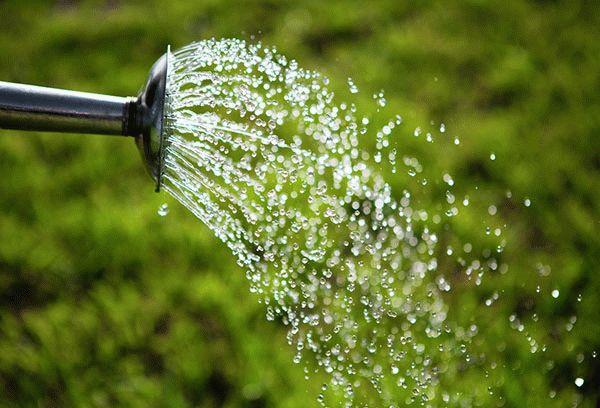

Pruning and shaping a tree
Oliva requires systematic pruning. The procedure is performed for sanitary purposes. In early spring, it is worth cutting off areas that have been affected by insects. Olive should be pruned in spring and for decorative purposes. Manual pruning shears will be able to create a spherical crown. When pruning, it is worth getting rid of weak branches, leaving strong ones.
When carrying out the manipulation, it is important to take into account that olive fruits can only grow on last year's branches.
Therefore, it is recommended to cut them very carefully in order to avoid destroying the crop.
Leaving during flowering
During flowering, the culture requires a more attentive attitude to care. During this period, it is important to monitor the condition of the soil. It is worth watering the culture as needed. This is done when the top layer of the soil is dry.
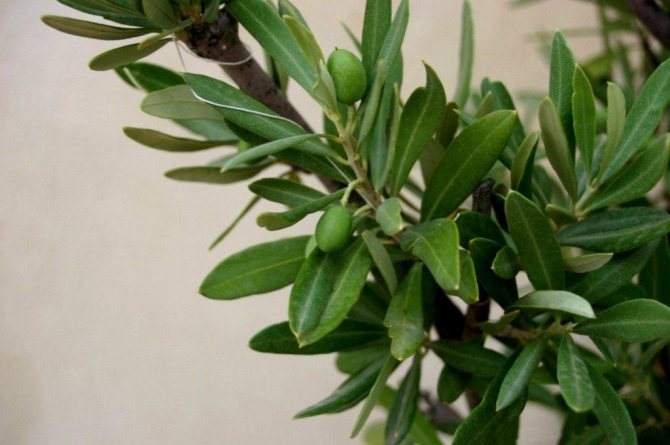

If there is little moisture, the leaves become dull and curl up. Then they start to fall off. This leads to the death of the plant. Olives are characterized by yellowish or completely white flowers. They have a delicate aroma and appear in mid-June. When growing a plant at home, delicate flowers are present for several months.
See also
Description and characteristics of Toro blueberries, cultivation rules
To read
In natural conditions, insects and wind are responsible for pollination of the crop.At home, you should systematically shake the branches. In the case of self-pollination, the fruits are of different sizes. Cross-pollination helps to improve the quality of the olives and increase the yield parameters.
Planting and transplanting
As the root system develops, the plant pot may become cramped. In such a situation, it becomes necessary to transplant the culture. Experienced gardeners are advised to carry out this manipulation every 2 years. If the roots are in cramped conditions, this negatively affects the vegetation of the plant.
A culture transplant should be carried out by transferring a lump of earth. The flower pot should be a few centimeters larger. You should definitely use a clay container. It is this material that will provide the root system with full breathing.
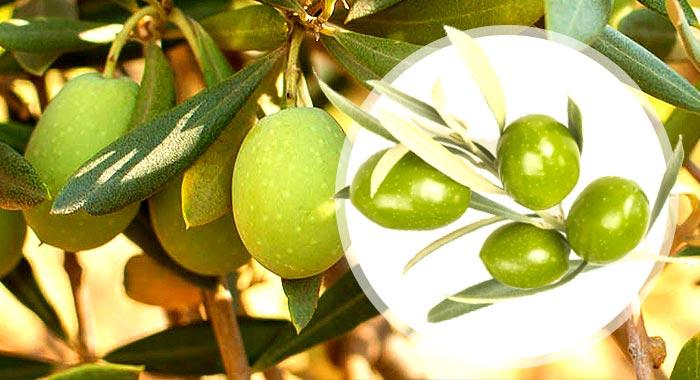

To get high-quality drainage, you should definitely lay expanded clay or broken brick at the bottom of the container. When transplanting, it is worth using a universal soil for flowers. It should be borne in mind that diseased plants also need to be transplanted. This procedure is used as a resuscitation agent.
This applies to specimens that have been oversaturated with moisture and experience root rot.
To identify the problem, it is worth assessing the appearance of the plant. When the roots rot, it sheds the leaves. In such a situation, it is worth removing the affected root elements, performing disinfecting work and cutting off the upper parts of the stems after transplanting.
Diseases: prevention and treatment
Olive has excellent immunity against harmful insects and diseases. However, lack of proper care, excess fluid, improper temperature conditions or insufficient illumination lead to the defeat of the culture by bacteria and fungi.
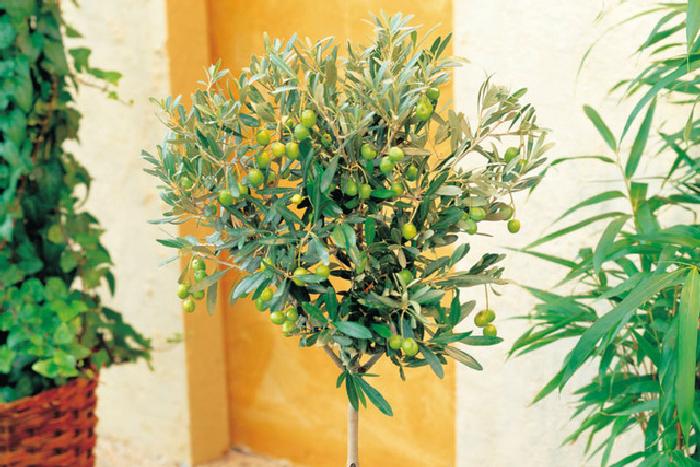

The most dangerous ailment for olive is tuberculosis. With its development, the culture becomes covered with large blisters. Usually, the infected tree cannot be cured, but small foci can be cut off. Copper sulfate is used to treat pathology.
Excessive moisture can cause rust or rot on the olive tree. Biological fungicides are a good way to deal with rot. These include Fundazol. To eliminate parasites, Karbofos, Actellik and other insecticides are actively used. They help deal with olive moths. The plant is severely damaged by black bugs. They lay many eggs in the bark of the culture. Insects can infect sick and healthy trees. To avoid problems, it is worth providing the culture with proper care.
Reproduction methods
There are several methods of propagation of the olive tree, which allows gardeners to choose the best option.
Seeds
The seeds should be taken from live olives. Canned fruits are not suitable because heat treatment deprives them of their biological bonds. Seeds should be soaked for 12-14 hours in a weak alkaline solution. Its concentration should be 10%. For the first planting, you will need a pot with a diameter of 10 centimeters. The bones must be washed and placed in the ground 2 centimeters. The first shoots will appear in 6-8 weeks. Ovaries on the plant are formed only after 10 years.
Cuttings
This is the most popular way of propagating a culture. Planting material should be harvested in the summer. To do this, you need to cut off 20 centimeters of shoots from a plant that is 2-4 years old. The shoot should be 3-4 centimeters thick. To root the stalk, it must be left in a growth stimulator - Ecosile or Kornevin for several hours. Then the planting material should be lowered into water or wet sandy soil.
For the procedure to be successful, the plant needs to create favorable conditions:
- temperature - at least 20 degrees;
- good lighting without direct sunlight;
- high humidity.
How to get a Potted Olive
Homemade olive can be planted by rooting a stalk.You can also buy a ready-made tree, but this will cost from 20 thousand rubles for a two-year-old olive. You can grow a plant from a seed, but such a tree will begin to bear fruit only after 12 years, while a tree grown from a cuttings will take three years to do this.
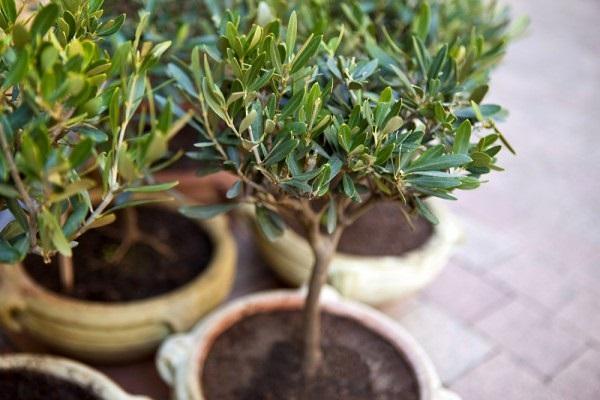

What difficulties may arise
The main difficulty in growing olive is the risk of its infection with harmful insects and diseases. The most dangerous tree pests are black worms. At the same time, an excess of chemicals negatively affects the yield parameters. Therefore, gardeners recommend maintaining the immunity of the plant with the help of mineral and organic fertilizers.
Olive is a beautiful ornamental plant that can be grown at home. To achieve good results, it is worthwhile to strictly adhere to agrotechnical measures and engage in the prevention of crop diseases.
Taxonomy
Olea europaea
, 1753, Sp. Pl. 1: 8 [11].
Synonyms
- Olea alba Lam. ex Steud.
- Olea amygdalina gouan
- Olea angulosa gouan
- Olea angustifolia Raf. nom. illeg.
- Olea argentata Clemente ex Steud. nom. inval.
- Olea arolensis Clemente ex Steud. nom. inval.
- Olea atrorubens gouan
- Olea bifera Raf.
- Olea brevifolia Raf.
- Olea buxifolia (Aiton) Steud. nom. illeg.
- Olea cajetana Petagna
- Olea cayana Raf.
- Olea communis Steud. nom. inval.
- Olea craniomorpha gouan
- Olea ferruginea (Aiton) Steud.
- Olea gallica Mill.
- Olea hispanica Mill.
- Olea lancifolia Moench
- Olea latifolia (Aiton) Steud. nom. illeg.
- Olea longifolia (Aiton) Steud.
- Olea lorentii Hochst.
- Olea obliqua (Aiton) Steud.
- Olea oblonga gouan
- Olea odorata Rozier ex Roem. & Schult.
- Olea officinarum Crantz
- Olea oleaster Hoffmanns. &
- Olea pallida Salisb. nom. illeg.
- Olea polymorpha Risso ex Schult.
- Olea praecox gouan
- Olea racemosa gouan
- Olea regia Rozier ex Roem. & Schult.
- Olea sativa weston
- Olea sativa Hoffmanns. & Link nom. illeg.
- Olea sphaerica gouan
- Olea sylvestris Mill.
- Olea variegata gouan
- Olea viridula gouan
- Phillyrea lorentii Walp.
Subspecies
- Olea europaea subsp. europaea
- Olea europaea subsp. cerasiformis G. Kunkel & Sunding [syn. Olea europaea var. cerasiformis Webb & Berthel. ]
- [syn. Olea europaea var. maderensis Lowe]
- [syn. Olea africana Mill. - African olive]
- [syn. Olea laperrinei Batt. & Trab.]
- [syn. Olea maroccana Greuter & Burdet]
World production
| World production of olives (2004) [14] | |||||
| A place | Country | Production (in thousands) | A place | Country | Production (in thousands) |
| 1 | Spain | 4.556 | 11 | Algeria | 170 |
| 2 | Italy | 3.150 | 12 | Libya | 148 |
| 3 | Greece | 2.300 | 13 | Argentina | 95 |
| 4 | Turkey | 1.800 | 14 | Jordan | 85 |
| 5 | Syria | 950 | 15 | USA | 77 |
| 6 | Morocco | 470 | 16 | Iran | 43 |
| 7 | Tunisia | 350 | 17 | Peru | 38 |
| 8 | Egypt | 320 | 18 | Croatia | 33 |
| 9 | Portugal | 270 | 19 | Albania | 30 |
| 10 | Lebanon | 180 | |||
Interesting Facts
Many tourists bring olive trees as souvenirs from Greece. Crete is a leading olive oil producer, supplying most of the olive oil to the world market. The average lifespan of the Cretans is 80 years, and they attribute their longevity to the regular consumption of olives and their processing products. Therefore, grow them at home, enjoy the healthy fruits and observe the beauty of the olive tree all year round!
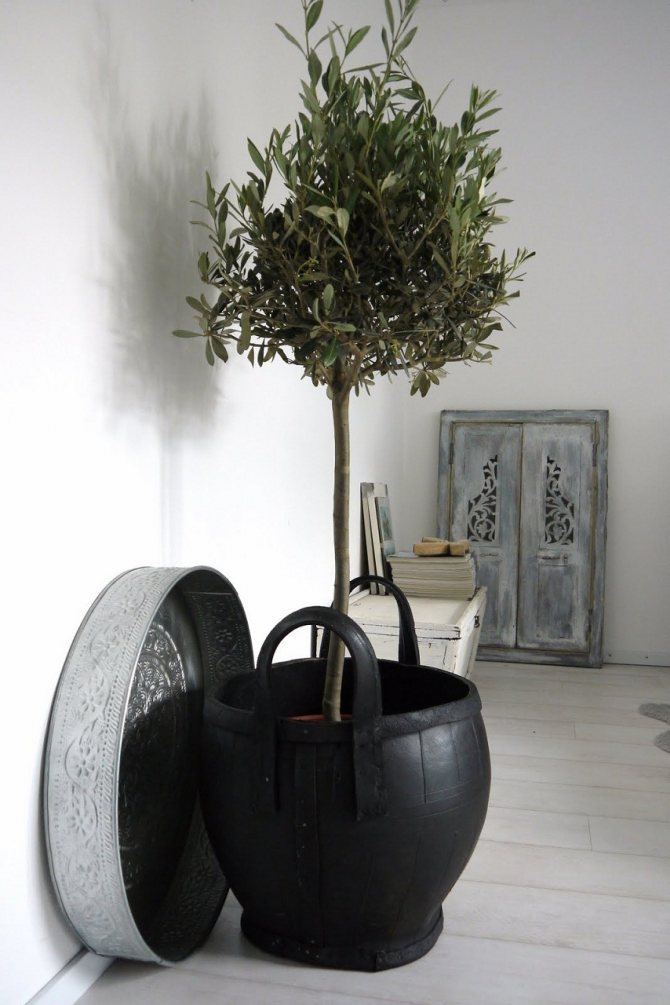

Related entries:
- Adenium: 3 Ways to Grow a "Desert Rose" at Home When I first saw these flowers, and then they grew in a group of five plants, for some reason they reminded me of snails ...
- Delonix royal or fire tree, grown at home Today we will talk about a very interesting plant, the second name of which is "Fire tree", about Delonix, who originally came to our homes from ...
- Common myrtle. We take care of and shape the tree. It grows, blooms, emits oxygen, pleases the eye, is not demanding in care, what else is needed from a home flower? Contents1 Description2 Varieties3 Formation ...
- Turn your home into a resort! It's elementary with the Trachikarpus palm! A branchy beauty, the Trachikarpus palm tree, even on the coldest winter evening, will remind you of a hot southern resort. Bright fan leaves are spectacular ...
- Eucalyptus. Leaves are a whole home medicine cabinet with a set of medicinal properties. Recently, this tree has attracted the attention of not only koalas, but also indoor florists. Content1 Description of the plant2 Species3 Growing3.1 From ...
Classification
For centuries, the inhabitants of the Mediterranean have bred various varieties of homemade olives, which differ in the percentage of oil. The most oily ones belong to the oilseed group. Combined - suitable for processing and canning. Oil is not squeezed out of table varieties, but consumed raw, canned and pickled. Today the olive is grown not only in plant nurseries, but also at home. Popular table varieties: Crimean 172, Revolution, Nikitskaya 1, Nadzhviyskaya, Razzo, Askelano, Mession, Sevigliano, Urtinskaya, Otur, Coregialo.
Photo gallery
Application in traditional medicine
According to statistics, in Mediterranean countries, the incidence of cardiovascular pathologies is significantly lower than in northern countries.And for the most part this is provided by the kitchen, in which olive oils with a high content of polyunsaturated fatty acids occupy an important place. Of the effects on the body, it is worth highlighting:
- improving the condition of the blood vessels;
- thinning blood and reducing the likelihood of blood clots;
- normalizes blood pressure;
- a binding effect on excess cholesterol in the blood, an obstacle to the development of atherosclerosis.
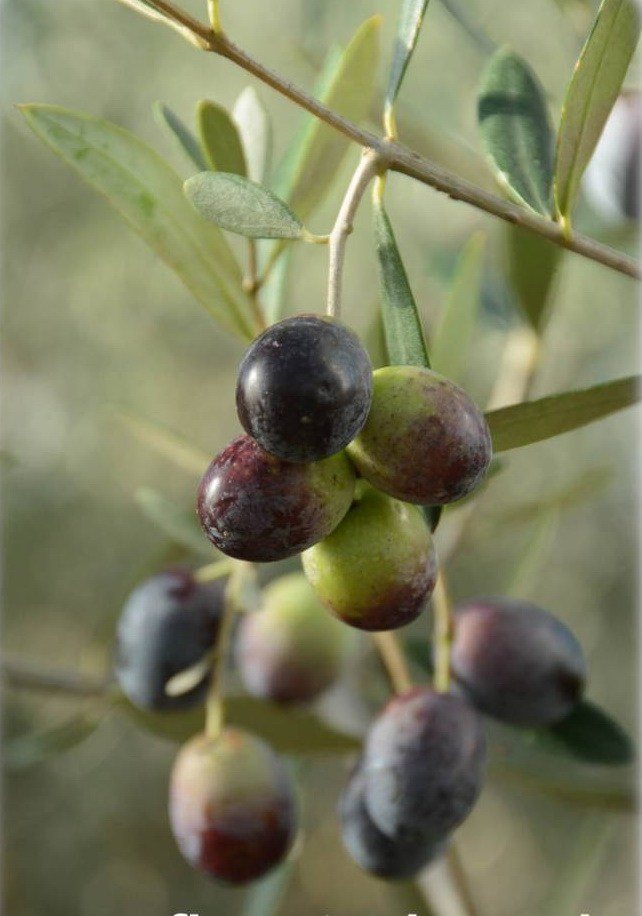

There is a positive effect on the gastrointestinal tract, in particular:
- choleretic action, prevention of the formation of stones in the gallbladder;
- promotes the regeneration of liver cells;
- cleanses the intestines from toxins, has a laxative effect;
- improves digestion by stimulating the production of enzymes.
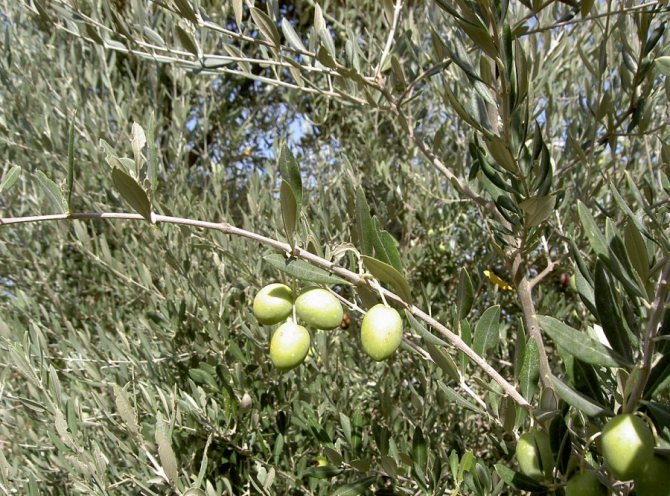

Regular consumption of olive oil affects almost all organ systems, therefore it is included in many modern diets that pursue a variety of goals - from weight loss to replacement nutrition during pregnancy.
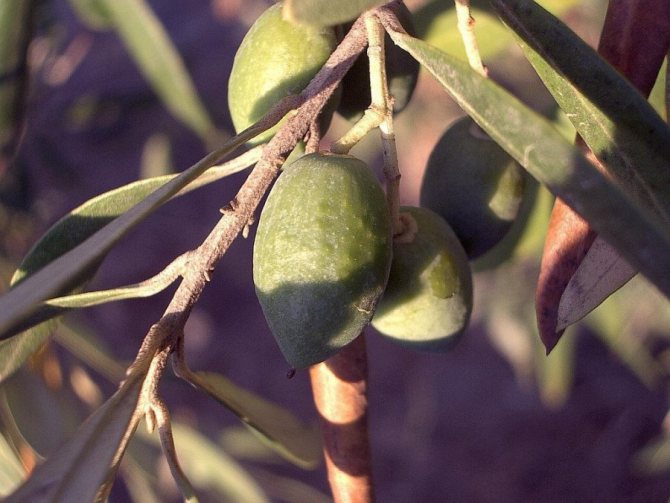

Growing area
The usual climate where olives grow is heat, sun and eternal summer. This is the entire Mediterranean region from Israel to Spain, as well as India, Australia, Central America. In Russia, they are found on the coast of the Krasnodar Territory and in the Crimea, but they are not cultivated in industrial volumes.
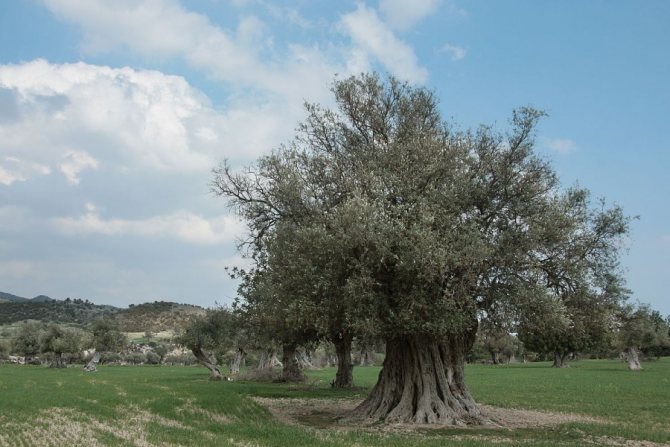

In more severe latitudes, it is possible to grow in greenhouse conditions, or at home, right on the windowsill - the root system lends itself well to oppression, which makes it possible to use it in the decorative bonsai style.
